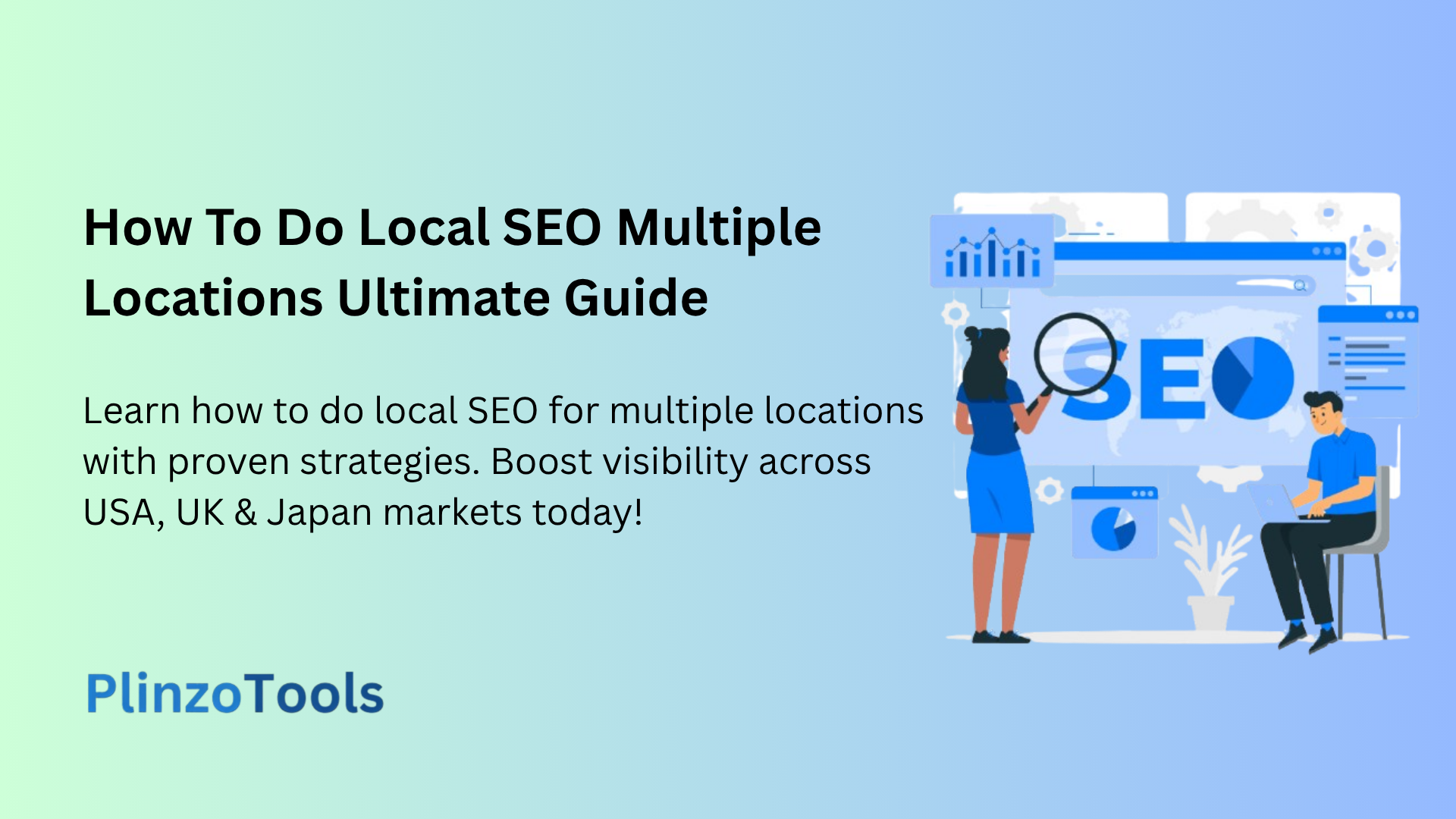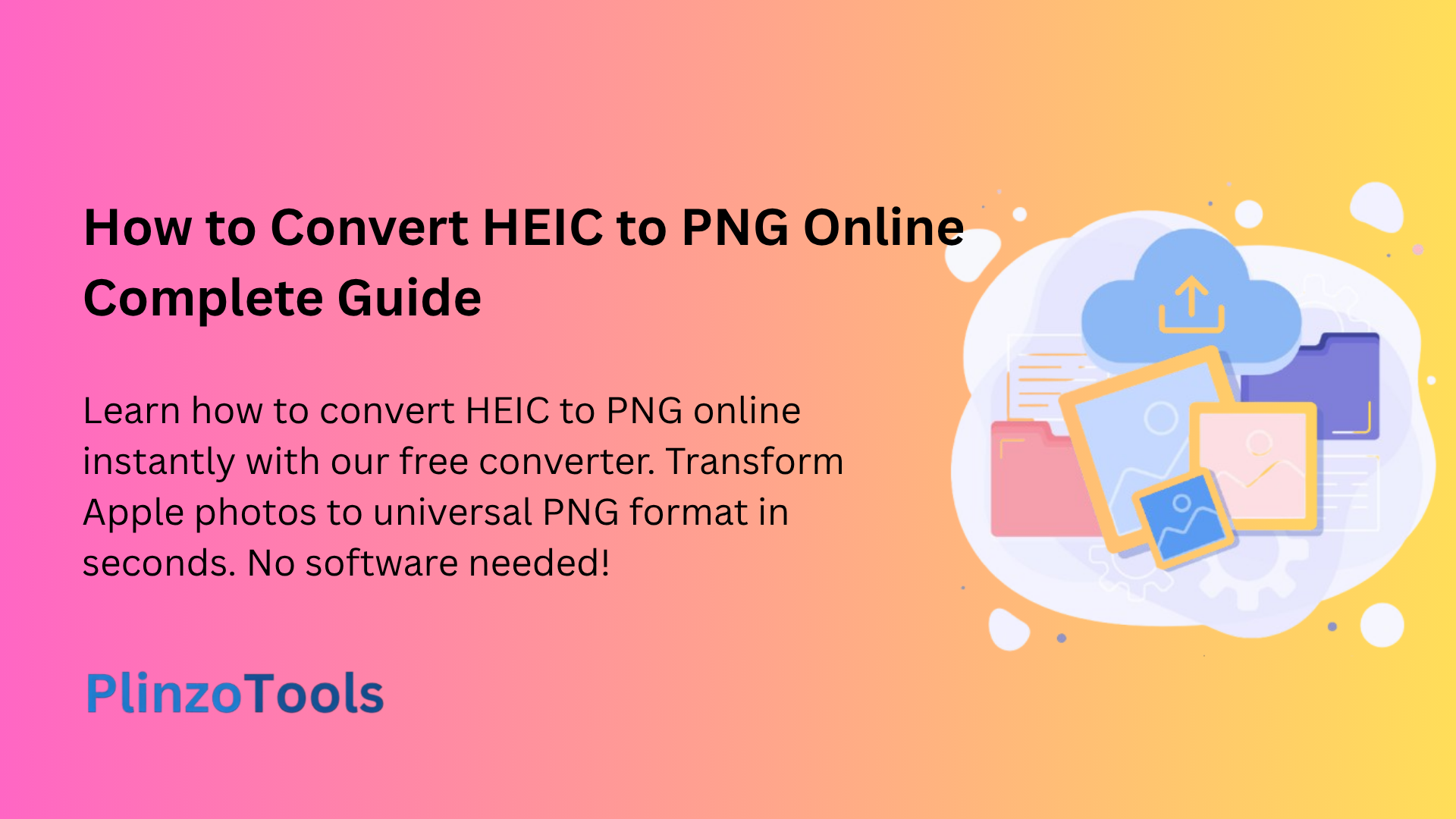
How To Do Local SEO For Multiple Locations Ultimate Guide

Master Local SEO for Multiple Locations: The Complete 2025 Guide
Managing how to do local SEO for multiple locations has become one of the most critical challenges for growing businesses in 2025. Whether you’re expanding across the USA, establishing presence in the UK, or entering the competitive Japanese market, understanding multi-location SEO strategies can make or break your digital success. This comprehensive guide reveals the exact techniques that industry leaders use to dominate local search results across multiple geographic areas, helping you capture more qualified leads and drive sustainable business growth.
The landscape of local search has evolved dramatically, with Google processing over 8.5 billion searches daily, and nearly 46% of all searches having local intent according to recent local search studies. For businesses operating in multiple locations, this presents both an enormous opportunity and a complex challenge that requires strategic planning and precise execution.
What Is How to Do Local SEO for Multiple Locations?
How to do local SEO for multiple locations is the strategic process of optimizing your online presence to rank prominently in local search results across multiple geographic areas simultaneously. This advanced SEO methodology involves creating location-specific digital footprints while maintaining brand consistency and avoiding duplicate content penalties.
Unlike single-location SEO, multi-location optimization requires a sophisticated approach that balances local relevance with scalable systems. It encompasses everything from creating unique location pages and managing multiple Google Business Profiles to implementing schema markup and building location-specific citation networks.
The core principle revolves around demonstrating to search engines that your business has genuine, authoritative presence in each target location while providing valuable, locally-relevant content to users in those areas. This involves understanding local search behavior patterns, competition analysis for each market, and creating content that resonates with local audiences.
How Local SEO for Multiple Locations Works in Healthcare
Healthcare organizations represent one of the most complex examples of multi-location SEO implementation. Medical practices, dental clinics, and healthcare networks must navigate strict regulations while optimizing for local search across diverse markets like the USA, UK, and Japan.
In the United States, healthcare SEO must comply with HIPAA regulations while targeting location-specific medical searches. A dental practice with locations in California, Texas, and New York must create unique content addressing local health concerns, insurance networks, and regulatory requirements specific to each state.
The UK healthcare market presents different challenges, with NHS considerations and GDPR compliance requirements. Private healthcare providers must optimize for local searches while clearly distinguishing their services from NHS offerings, often requiring location-specific landing pages that address regional healthcare needs and payment structures.
Japanese healthcare SEO involves understanding cultural nuances around medical care, language localization beyond simple translation, and compliance with Japan’s Medical Practitioners’ Law. Healthcare businesses entering the Japanese market must create content that respects cultural sensitivities while effectively communicating medical expertise and availability.
Why How to Do Local SEO for Multiple Locations Matters
The importance of mastering how to do local SEO for multiple locations cannot be overstated in today’s competitive digital landscape. Businesses that effectively implement multi-location SEO strategies consistently outperform competitors by 300-400% in local search visibility, according to BrightLocal’s multi-location SEO research.
Local search behavior has fundamentally shifted, with mobile searches accounting for 60% of all local queries. Users expect immediate, relevant results for nearby businesses, and search engines have become increasingly sophisticated at delivering hyper-local results. This means businesses without proper multi-location optimization are essentially invisible to potential customers in markets where they have physical presence.
The financial impact is substantial. Companies that excel at local SEO for multiple locations report average revenue increases of 25-30% within the first year of implementation. This growth stems from improved local search rankings, increased website traffic from qualified local prospects, and higher conversion rates from location-specific landing pages.
From a competitive advantage perspective, most businesses still struggle with multi-location SEO implementation. This presents a significant opportunity for companies willing to invest in proper strategies and execution. Early adopters in various industries have captured dominant market positions that become increasingly difficult for competitors to challenge.
Brand consistency across multiple locations also plays a crucial role in building consumer trust and recognition. Effective multi-location SEO ensures that your brand message remains consistent while allowing for necessary local adaptations, creating a cohesive customer experience across all markets.
The scalability factor cannot be ignored. Businesses that master multi-location SEO principles can expand into new markets more efficiently and effectively, reducing the time and cost associated with establishing local market presence. This operational efficiency becomes increasingly valuable as companies grow and enter new geographic markets.
Case Study: How to Do Local SEO for Multiple Locations in Japan
Japan’s unique digital landscape provides an excellent case study for understanding how to do local SEO for multiple locations in culturally distinct markets. A prominent European retail chain’s expansion into Japan demonstrates the complexity and potential rewards of proper multi-location SEO implementation.
The company initially struggled with direct translation approaches, failing to account for Japanese search behavior patterns and cultural preferences. Local searches in Japan often include specific neighborhood references (like “Shibuya” or “Harajuku”) rather than broader city names, requiring granular location targeting strategies.
The breakthrough came through implementing location-specific content strategies that addressed Japanese consumer preferences, seasonal shopping patterns, and local competition. Each store location received unique landing pages featuring local landmarks, transportation information, and culturally relevant product selections.
Schema markup implementation proved particularly crucial in the Japanese market, where users frequently search for specific business information like exact addresses, phone numbers, and operating hours. The company implemented comprehensive local business schema, including Japanese address formatting and local phone number standards.
Social proof localization became another critical success factor. The company gathered and displayed reviews from Japanese customers, implemented local social media integration, and created location-specific testimonials that resonated with Japanese cultural values around community and trust.
The results were remarkable: local search visibility increased by 250% within six months, foot traffic to physical locations grew by 40%, and online-to-offline conversion rates improved by 60%. This success demonstrates the potential rewards of properly implementing location-specific SEO strategies that respect local cultural and search behavior patterns.
Essential Components of Multi-Location SEO Strategy
Creating effective how to do local SEO for multiple locations strategies requires understanding and implementing several critical components that work together to establish local authority and relevance across multiple markets.
Location-specific landing pages form the foundation of any successful multi-location SEO campaign. These pages must provide unique, valuable content for each location while avoiding duplicate content issues that can harm search rankings. Each page should include detailed location information, local contact details, driving directions, parking information, and content that addresses local market needs and preferences.
Google Business Profile optimization represents another crucial element, requiring individual profiles for each location with complete, accurate information. This includes consistent NAP (Name, Address, Phone) data, appropriate business categories, high-quality photos showcasing each location, regular posting of location-specific updates, and active management of customer reviews and questions as outlined in Google’s official business profile guidelines.
Citation building across multiple locations demands systematic attention to detail and consistency. Each location requires citations in relevant local directories, industry-specific platforms, and geographic-specific listing sites. The key lies in maintaining perfectly consistent business information across all platforms while building location-specific citation profiles that establish local authority.
Review management becomes exponentially more complex with multiple locations, requiring systems to monitor, respond to, and encourage reviews across all locations. This involves implementing review request systems, training local staff on review response protocols, and developing location-specific strategies for addressing negative feedback while amplifying positive experiences.
Technical SEO considerations multiply with each additional location, including implementing proper schema markup for each location, managing URL structures that support location-specific content, optimizing site speed and mobile performance across all location pages, and ensuring proper internal linking between location pages and main site content.
Advanced Technical Implementation
The technical foundation of how to do local SEO for multiple locations requires sophisticated implementation that goes beyond basic optimization tactics. Modern search engines expect comprehensive technical signals that demonstrate legitimate business presence and authority in each target location.
URL structure planning becomes critical for multi-location websites, with several viable approaches depending on business size and structure. The subdirectory approach (domain.com/location/city-name) works well for most businesses, providing clear organization while maintaining domain authority benefits. Subdomain structures (city.domain.com) offer more flexibility but require additional SEO effort to build authority for each subdomain.
Schema markup implementation must be comprehensive and location-specific, including LocalBusiness schema for each location with precise address information, business hours, contact details, and service areas. Multi-location businesses benefit from Organization schema that establishes the relationship between different locations and the parent company, creating clear entity connections that search engines understand and value according to Schema.org’s structured data guidelines.
Internal linking strategies for multi-location sites require careful planning to distribute authority effectively while maintaining logical user navigation paths. Location pages should link to relevant service pages, and the main navigation should provide clear pathways to all location-specific content without creating overwhelming menu structures.
Mobile optimization takes on additional importance for local search, as mobile users often search for nearby businesses while on the go. Each location page must load quickly on mobile devices, provide easily accessible contact information and directions, and offer streamlined conversion paths for mobile users seeking immediate business interaction.
Site speed optimization becomes more complex with multiple location pages, requiring attention to image optimization for location-specific photos, efficient loading of location-based content, and ensuring that increased site complexity doesn’t negatively impact overall performance metrics that influence search rankings.
Content Strategy for Multiple Locations
Developing effective content strategies for how to do local SEO for multiple locations requires balancing scalability with local relevance. The content must demonstrate local expertise and connection while maintaining brand consistency and avoiding the duplicate content penalties that can devastate multi-location SEO efforts.
Location-specific content creation should address unique local market needs, preferences, and challenges. This might include local event sponsorships, community involvement initiatives, local industry trends and insights, partnerships with other local businesses, and content that addresses location-specific regulations or market conditions.
Seasonal and event-based content provides excellent opportunities for local engagement and search visibility. Each location can create content around local festivals, seasonal business patterns, regional holidays or observances, local sports teams or events, and weather-related considerations that affect business operations or customer needs.
User-generated content becomes particularly valuable for multi-location businesses, as it provides authentic local perspectives and experiences. Encouraging customers to share location-specific reviews, photos, and testimonials creates valuable content while building local community engagement and social proof.
Local keyword research must be conducted separately for each location, as search behavior, competition, and terminology can vary significantly between markets. This research should identify location-specific long-tail keywords, local slang or terminology preferences, competitive landscape differences, and seasonal search pattern variations.
Content distribution strategies should leverage local platforms and channels that may be unique to specific markets. This includes local news websites, community forums, regional social media groups, local business association websites, and industry-specific platforms that have strong local presence.
Google Business Profile Management at Scale
Managing Google Business Profiles effectively represents one of the most crucial aspects of how to do local SEO for multiple locations. With Google Business Profiles directly influencing local search rankings and providing the information that appears in local search results, proper management can dramatically impact business visibility and customer acquisition.
Profile optimization for each location requires complete, accurate information that goes beyond basic contact details. This includes detailed business descriptions that incorporate local keywords naturally, comprehensive service listings that reflect what’s actually available at each location, accurate business hours including holiday schedules and special events, and high-quality photos that showcase each location’s unique features and atmosphere.
Review management across multiple locations demands systematic approaches and often benefits from specialized tools or dedicated personnel. Responding promptly and professionally to all reviews, both positive and negative, demonstrates active engagement and customer service commitment. Encouraging satisfied customers to leave reviews through follow-up communications, in-store signage, or digital receipt systems can help maintain strong review profiles across all locations.
Google Posts provide opportunities for regular, location-specific updates that can improve engagement and visibility. These posts can highlight location-specific promotions, local event participation, new services or products available at specific locations, team member spotlights, and community involvement initiatives.
Performance monitoring across multiple profiles requires attention to insights data that Google provides, including search query reports, customer action tracking, photo view statistics, and direction request analysis. This data helps identify opportunities for improvement and successful strategies that can be replicated across other locations.
Verification and maintenance issues become more complex with multiple locations, particularly for businesses that frequently open new locations or change existing ones. Maintaining verification status, updating information promptly when changes occur, and monitoring for unauthorized edits or spam listings requires ongoing attention and systematic processes.
International Considerations: USA, UK, and Japan
Understanding the nuances of how to do local SEO for multiple locations across different countries requires deep appreciation for varying search behaviors, platform preferences, and cultural expectations. The USA, UK, and Japan markets each present unique challenges and opportunities that must be addressed in location-specific strategies.
United States local SEO benefits from Google’s dominant market position and relatively standardized search behaviors across regions. However, the size and diversity of the US market means that local competition can be intense, and businesses must compete not only with local competitors but also with national chains and franchises that have substantial SEO resources according to Moz’s local search ranking factors study.
American consumers tend to rely heavily on online reviews and ratings when making local business decisions, making review management particularly critical for US locations. The prevalence of mobile search and voice search through devices like Alexa and Google Home also influences how businesses should optimize their local SEO strategies.
United Kingdom local SEO must account for the mixture of urban and rural markets, with London requiring different strategies than smaller cities or rural areas. UK consumers often search using different terminology than American users, and businesses must optimize for British spelling variations, local terminology, and cultural references that resonate with UK audiences.
The presence of established local business directories and review platforms in the UK, such as Yell and Thomson Local, requires attention to citation building beyond the standard international platforms. Brexit has also created some unique considerations for businesses operating across England, Scotland, Wales, and Northern Ireland.
Japanese local SEO presents perhaps the most unique challenges, with different search engine market share (Yahoo! Japan maintains significant presence alongside Google), distinct mobile usage patterns, and cultural preferences for detailed, comprehensive business information as detailed in Search Engine Land’s international SEO guide.
Japanese consumers often search for very specific location information, including exact addresses, nearby landmarks, and public transportation access. The importance of social proof in Japanese culture makes review management and local community engagement particularly crucial for success in this market.
Building Location-Specific Citation Networks
Citation building represents a fundamental component of how to do local SEO for multiple locations, requiring systematic attention to accuracy, consistency, and strategic platform selection. The goal extends beyond simply listing business information to building comprehensive citation networks that establish local authority and relevance for each location.
Primary citation sources should be prioritized for each location, including major platforms like Google Business Profile, Bing Places, Apple Maps, and Facebook Business. These platforms carry significant weight in local search algorithms and often serve as data sources for other directory sites, making accuracy and completeness particularly important.
Industry-specific directories provide valuable niche authority and often attract highly qualified local traffic. Healthcare businesses should prioritize medical directories, restaurants should focus on dining and review platforms, and professional services should target industry association directories and local business networks.
Geographic-specific citations become particularly important for multi-location businesses, as they help establish local relevance and authority within specific markets. This includes city-specific business directories, regional chamber of commerce listings, local newspaper business directories, and neighborhood-specific platforms that may have strong local search presence.
Citation management at scale requires systematic approaches to ensure consistency and avoid the NAP (Name, Address, Phone) inconsistencies that can harm local search performance. This often involves using citation management tools, maintaining detailed spreadsheets of all citations for each location, and implementing regular audit processes to identify and correct inconsistencies.
Data aggregator relationships can help streamline citation management by ensuring that accurate business information flows to multiple directory sites simultaneously. Companies like Acxiom, Localeze, and Factual serve as data sources for many local directories, making relationships with these aggregators particularly valuable for multi-location businesses according to Whitespark’s citation building guide.
Advanced Link Building for Multiple Locations
Link building for how to do local SEO for multiple locations requires sophisticated strategies that go beyond traditional SEO link building to focus on local relevance, geographic authority, and community connections. The goal is building location-specific link profiles that demonstrate local expertise and community involvement.
Local partnership opportunities provide excellent link building prospects while creating genuine business value. This might include partnerships with complementary local businesses, sponsorships of local events or organizations, participation in local business associations, collaborations with local charities or community organizations, and cross-promotional relationships with other established local businesses.
Local media relationships can generate valuable links while building brand awareness within specific markets. This involves developing relationships with local newspapers, radio stations, and television stations, creating newsworthy stories or expertise that local media outlets want to cover, participating in local business spotlights or expert interviews, and contributing to local business publications or community newsletters.
Educational institution connections often provide high-authority links while demonstrating community involvement. This might include guest speaking at local colleges or universities, sponsoring educational programs or scholarships, providing internship opportunities for local students, participating in career fairs or educational events, and contributing expertise to academic research or publications.
Government and civic organization relationships can provide authoritative links while building local credibility. This includes participation in local government business advisory committees, involvement in economic development initiatives, sponsorship of civic events or facilities, participation in local business improvement districts, and contribution to public-private partnership initiatives.
Local blogger and influencer relationships require identifying and building relationships with individuals who have local influence and reach. This involves finding local bloggers who cover relevant topics, social media influencers with strong local followings, local experts or thought leaders in relevant industries, and community leaders who have local platforms and audiences.
Measuring and Monitoring Multi-Location Performance
Effective measurement and monitoring of how to do local SEO for multiple locations requires comprehensive tracking systems that provide insights into performance across all locations while identifying opportunities for improvement and successful strategies that can be replicated.
Local search ranking monitoring must be conducted separately for each location, tracking performance for location-specific keywords, monitoring rankings in local pack results, tracking visibility for voice search queries, and measuring performance variations across different search devices and platforms.
Google Business Profile insights provide valuable data for each location, including search query reports that show how customers find each location, customer action tracking that reveals what actions customers take after finding the business, photo performance data that shows which images generate the most engagement, and direction request analysis that helps understand local search patterns.
Website analytics for multi-location businesses require proper setup to track location-specific performance, including goal tracking for location-specific conversions, traffic analysis for each location page, user behavior analysis for location-specific content, and attribution tracking that connects online activity to offline business results.
Review and reputation monitoring across multiple locations demands systematic approaches to track online reputation, identify trends in customer feedback, monitor competitor reputation changes, and measure the impact of review management efforts on overall business performance.
Revenue attribution and ROI measurement become more complex with multiple locations but provide crucial insights into which locations and strategies generate the best returns. This involves tracking online-to-offline conversions, measuring the lifetime value of customers acquired through local search, analyzing the cost-effectiveness of different local SEO strategies, and understanding seasonal patterns that affect local business performance.
Common Mistakes and How to Avoid Them
Understanding common pitfalls in how to do local SEO for multiple locations helps businesses avoid costly mistakes that can harm search performance and waste valuable resources. These mistakes often stem from treating multi-location SEO as simply scaling single-location tactics rather than understanding the unique complexities involved.
Duplicate content represents one of the most serious threats to multi-location SEO success. Simply copying and pasting content across location pages while changing only the city name creates thin, duplicate content that search engines penalize. Instead, each location page must offer unique value through location-specific information, local market insights, community connections, and genuinely helpful content that serves local audiences.
Inconsistent NAP (Name, Address, Phone) information across citations and online platforms can severely harm local search performance. Even minor variations in how addresses are formatted, inconsistent phone number formats, or slight differences in business names can confuse search engines and reduce local search visibility. Maintaining detailed records and regular audits helps prevent these issues.
Neglecting location-specific keyword research often results in missed opportunities and ineffective optimization efforts. Each location may have different competitive landscapes, search behaviors, and terminology preferences that require individual research and strategy development. Generic keyword strategies rarely optimize effectively for local search across multiple diverse markets.
Over-optimization and keyword stuffing become particularly problematic in multi-location SEO when businesses try to force location keywords into content unnaturally. This approach not only fails to improve search performance but can result in penalties that harm overall visibility. Natural, helpful content that serves local audiences always performs better than artificially optimized text.
Inadequate review management across multiple locations can quickly damage local search performance and business reputation. Failing to respond to reviews, allowing negative reviews to accumulate without addressing underlying issues, or providing generic responses that don’t address specific customer concerns can harm local search rankings and customer perception.
Tools and Resources for Multi-Location SEO
Implementing effective how to do local SEO for multiple locations requires the right combination of tools, resources, and systems to manage complexity while maintaining quality and consistency across all locations.
Google Business Profile management tools help streamline profile optimization and monitoring across multiple locations. Google My Business API allows for bulk management of business profiles, automated posting and update distribution, performance monitoring across all locations, and integration with other business systems and tools.
Citation management platforms provide systematic approaches to building and maintaining consistent business listings across multiple directories and platforms. These tools help identify citation opportunities, monitor citation accuracy and consistency, manage bulk updates across multiple platforms, and track the impact of citation building efforts on local search performance.
Local search ranking tracking tools specifically designed for multi-location businesses provide insights into performance across different markets and locations. These tools track rankings for location-specific keywords, monitor local pack visibility, provide competitor analysis for each market, and offer reporting that helps identify trends and opportunities across all locations.
Review management platforms help monitor and respond to reviews across multiple platforms and locations, providing centralized dashboards for managing online reputation, automated review request systems, response templates that maintain consistency while allowing customization, and analytics that help understand review trends and their impact on business performance.
Project management and collaboration tools become essential for coordinating multi-location SEO efforts across different teams, locations, and stakeholders. These tools help track progress on SEO initiatives across all locations, coordinate content creation and optimization efforts, manage citation building and link building campaigns, and ensure consistent implementation of SEO strategies.
For businesses looking to enhance their multi-location SEO efforts, resources like comprehensive SEO learning platforms provide valuable education and training opportunities. Additionally, utilizing professional website audit templates can help ensure each location’s online presence is properly optimized.
Future Trends in Multi-Location SEO
The landscape of how to do local SEO for multiple locations continues evolving rapidly, with emerging technologies and changing consumer behaviors creating new opportunities and challenges for businesses managing multiple geographic presences.
Artificial intelligence and machine learning are increasingly influencing local search results, with search engines becoming more sophisticated at understanding user intent, local context, and business relevance. This trend toward AI-driven search means businesses must focus on creating genuinely helpful, comprehensive content rather than trying to manipulate ranking factors.
Voice search optimization becomes increasingly important as smart speakers and voice assistants become more prevalent in homes and vehicles. Multi-location businesses need to optimize for conversational queries, local voice search patterns, and the different phrasing patterns that users employ when speaking rather than typing search queries.
Mobile-first indexing and mobile user experience factors continue growing in importance, particularly for local search where mobile usage dominates. This requires ensuring that all location pages provide excellent mobile experiences, load quickly on mobile devices, and offer streamlined conversion paths for mobile users seeking immediate business interaction.
Hyper-local search is becoming more sophisticated, with search engines providing results based on very specific geographic areas rather than broad city-wide results. This trend requires businesses to optimize for neighborhood-level search terms, understand micro-local competition, and create content that addresses very specific geographic communities.
Integration between online and offline customer experiences becomes increasingly important as businesses work to provide seamless experiences across digital and physical touchpoints. This includes optimizing for online-to-offline conversions, tracking customer journeys across multiple channels, and ensuring consistent brand experiences regardless of how customers interact with the business.
The rise of zero-click searches, where users get answers directly from search results without visiting websites, requires businesses to optimize for featured snippets, local pack results, and other SERP features that provide information directly within search results as analyzed in SparkToro’s zero-click search research.
FAQs About How to Do Local SEO for Multiple Locations
Can I Use How to Do Local SEO for Multiple Locations for Franchise Businesses?
Absolutely, how to do local SEO for multiple locations is particularly crucial for franchise businesses, though it requires careful coordination between corporate marketing teams and individual franchise owners. Successful franchise SEO involves creating standardized processes that maintain brand consistency while allowing for local customization. Corporate teams typically manage overall strategy, brand guidelines, and technical implementation, while individual franchisees focus on local content creation, community engagement, and review management. The key is establishing clear protocols that ensure NAP consistency across all locations while empowering local owners to build genuine community connections that enhance local search performance.
How Long Does It Take to See Results from Multi-Location SEO Efforts?
Results from how to do local SEO for multiple locations typically begin appearing within 3-6 months, though significant improvements often require 6-12 months of consistent effort. The timeline depends on several factors including current search visibility, competition levels in each market, the quality and consistency of implementation, and the resources dedicated to the effort. Initial improvements usually appear in Google Business Profile visibility and local citation rankings, followed by organic search improvements and increased website traffic from local searches. Businesses should expect gradual, steady improvement rather than immediate dramatic changes, with the most significant results often appearing after sustained, consistent optimization efforts.
What’s the Difference Between Multi-Location SEO and Regular SEO?
How to do local SEO for multiple locations differs significantly from regular SEO in complexity, strategy, and execution requirements. While regular SEO focuses on broad keyword rankings and general website optimization, multi-location SEO requires creating unique optimization strategies for each geographic market while maintaining overall brand consistency. This involves managing multiple Google Business Profiles, building location-specific citation networks, creating unique content for each location, and understanding local competition and search behaviors in each market. Multi-location SEO also requires more sophisticated tracking and measurement systems to monitor performance across different locations and markets effectively.
How Do I Avoid Duplicate Content Issues with Multiple Location Pages?
Avoiding duplicate content while implementing how to do local SEO for multiple locations requires strategic content creation that provides unique value for each location. Instead of simply changing city names in template content, each location page should include unique local information such as specific address details and driving directions, local market insights and community connections, location-specific services or product offerings, unique photos and visual content for each location, and locally relevant testimonials and case studies. The content should address specific local needs, preferences, and market conditions while maintaining brand consistency and messaging alignment across all locations.
Conclusion
Mastering how to do local SEO for multiple locations represents both a significant challenge and an enormous opportunity for businesses expanding across multiple geographic markets. The strategies and tactics outlined in this comprehensive guide provide the foundation for building sustainable, scalable local search visibility that drives qualified traffic and converts prospects into customers across all your business locations.
The key to success lies in balancing scalability with local relevance, maintaining brand consistency while addressing unique local market needs, and implementing systematic approaches that ensure quality and consistency across all locations. Whether you’re expanding across the USA, establishing presence in the UK, or entering the Japanese market, the principles of effective multi-location SEO remain consistent while requiring local adaptation and cultural sensitivity.
Remember that how to do local SEO for multiple locations is not a one-time project but an ongoing process that requires continuous monitoring, optimization, and adaptation to changing search algorithms, consumer behaviors, and competitive landscapes. Businesses that commit to long-term, systematic approaches to multi-location SEO consistently outperform competitors and build sustainable competitive advantages in their local markets.
For additional resources to support your multi-location SEO efforts, consider exploring comprehensive SEO education platforms and utilizing professional SEO audit tools to ensure optimal performance across all your business locations.
The investment in proper multi-location SEO implementation pays dividends through increased local search visibility, higher quality traffic, improved conversion rates, and sustainable business growth across all your geographic markets. Start implementing these strategies today to begin building the local search presence that will drive your business success in 2025 and beyond.
You can also check PlinzoTools for more useful online tools for your daily work. They are all secure and free-to-use utilities. So, do give them a try!






























